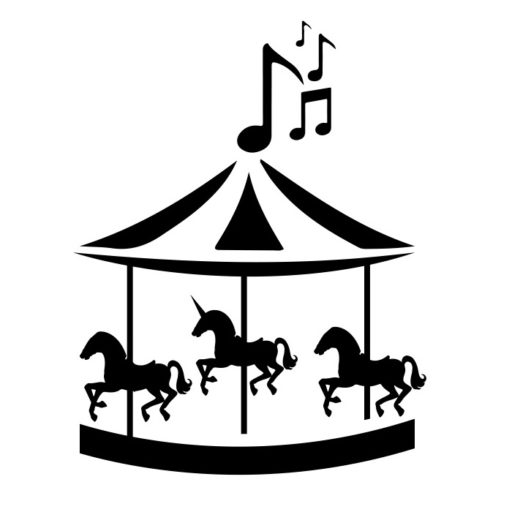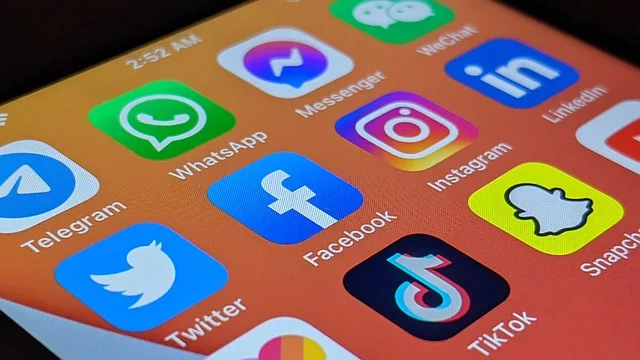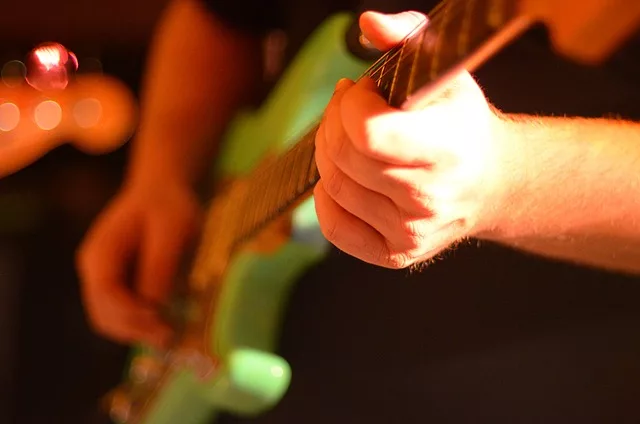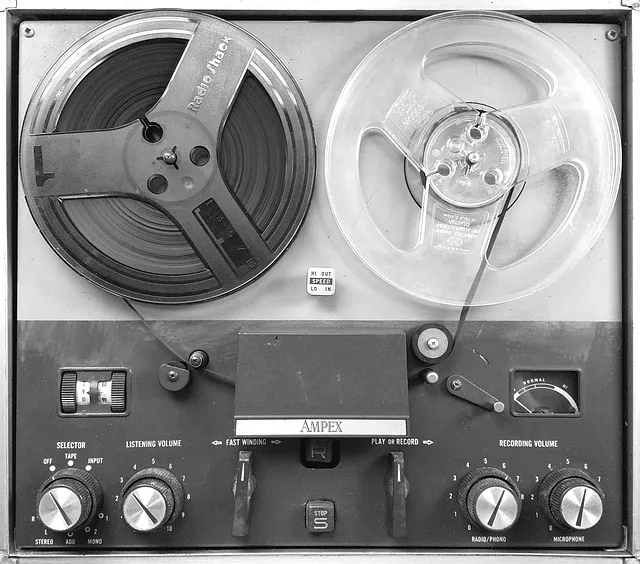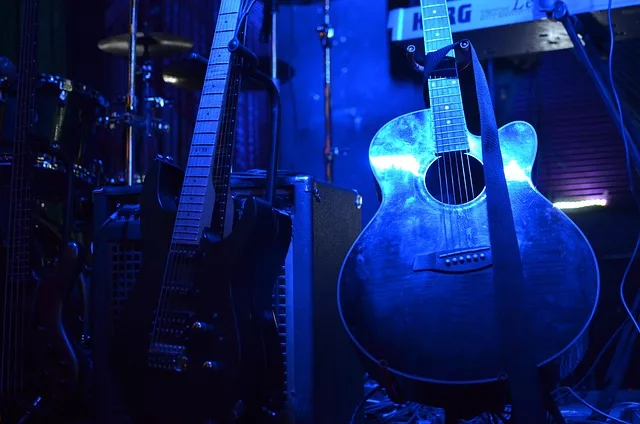DISCLAIMER: Parlor City Sound earns a commission (at no cost to you) if you click a link to Amazon and buy something while visiting this page. This is only applicable to Amazon links—we don't earn a sales commission from anyone else. Read our advertising disclosure & FAQ to learn more about our strict policies on affiliate marketing.
Figuring out how to manage social media for bands is a pretty big component of learning how to promote your music in the modern world. We’d go so far as to say that properly managing your band’s social media presence is as important to music marketing as tuning your guitar is to, well, playing your guitar.
Willie Sutton once said he robbed banks “because that’s where the money is.” And that sums up why you need to utilize social media for bands and music promotion these days. Out of the nearly 7.9 billion people on Earth, more than five billion people are using social media today. And that means the vast majority of your potential fans are on social media, too. Unless you’re writing music specifically catering to hermits, anyway.
Of course, social media marketing is a massive topic. It’s something people make entire careers out of. Colleges teach courses on it and wealthy companies focus exclusively on it. We obviously can’t cover the whole topic in a single article, right? So let’s just go over the basics here, and learn how properly utilizing social media for bands can help steer people toward your gigs, your band’s website, and more.
Social media for bands: Basic need-to-know terminology
In order for someone to really understand social media for bands, it helps to learn a lot of useful terminology and what these words and phrases mean. And given that social media is really just one big marketing funnel, we’ll explain these phrases in the context of that funnel. Which probably makes more sense if you know what a marketing funnel is. So consider also reading our guide covering the basics of music marketing funnels. You’ll hopefully find that guide useful, too!
The basic concept in broader marketing is that everyone who might potentially see your product is up at the top of the funnel, and the people who love your product, evangelize it, and keep using it are at the bottom. And you want a marketing strategy—or in this case, a social media marketing strategy—to take every phase of a customer’s journey into consideration. So as we learn these phrases, you may want to consider each thing as its own entity. Each of these is an individual tool for you to utilize in different ways.
Users, content, algorithms, and feeds
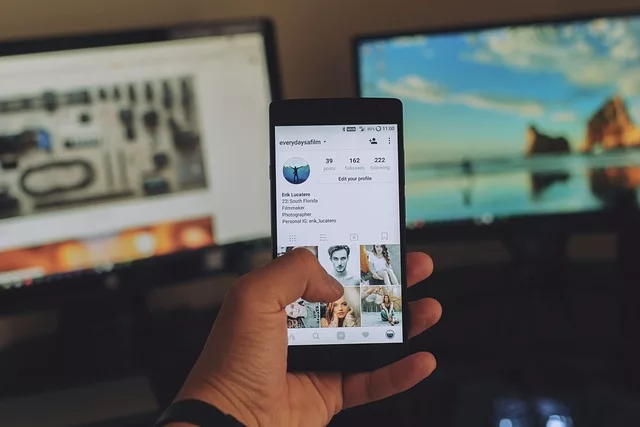
A user is simply someone who uses a social media platform. And while some people are going to read this and feel like Keanu Reeves waking up in that weird snot cocoon in The Matrix, it’s important to note that we aren’t customers on social media … we’re the product. Their goal is to make money by getting their users to click on ads and buy stuff. That means they want their users staying on their platform for as long as possible. And engaging content is the key to keeping people interested and scrolling.
Content refers to posts on social media. Every individual thing you post on social media is a piece of content, which is then displayed in feeds. A feed is a list of content displayed to a user. For instance, your “Facebook wall” is a feed showing all of the content that’s visible to you. It’s feeding content to users.
An algorithm is a digital tool that organizes content in a user’s feed. The algorithm has a set of perimeters—conditions and rules—that it uses to determine when, where, and how content is distributed within someone’s feed. The algorithm determines if, why, and how often people see your content, so it’s important!
We should also quickly mention paid or “boosted” content, which is content that appears in your feed because someone paid to have you see it. The algorithm will usually prioritize paid content, improving its odds of getting into the feeds of people targeted by whoever paid for them.
Impressions and engagement
How do we measure the success of social media content? Or more importantly, how do algorithms measure it? For this, we need to look at impressions and engagement.
Impressions measure every single instance of content appearing in one or more feeds. Each and every time your content appears in someone’s feed, including your own, that’s an impression. Even if it’s the same person seeing that content multiple times.
Engagement is more involved, and it’s something you really want to have when managing social media for bands. Engagement measures people actually engaging with content. They’ve put a like or a react on it, or they’ve left a comment on the post, or they’ve shared the content with others. They didn’t just see the content (an impression), but they’ve gone one step further and interacted with that content (an engagement).
This brings us back to algorithms. Algorithms prioritize the delivery of content to your feed based on how likely you are to engage with it. Impressions are nice and all, but these social media platforms want you to engage with content. That’s what keeps you scrolling and seeing more ads you might potentially click on, which generates revenue for them. So having engaging content helps the social media platform … and it can help promote your band and your music, too.
Follows and shares: the bread and butter of social media for bands

You probably understand the basics of how “following” works. You like/ follow pages you like and want to follow. Pretty straightforward, right? But how does this work on a deeper, more technical level?
By liking or following a page, the algorithm allows content from that source into your feed. And if you engage with that content, it’ll prioritize that page’s content appearing in your feed even more.
Have you ever earned a “top fan” badge for a page on Facebook? That doesn’t really mean you love that page more than other people. It means you engage with that page’s content more than average users. So the algorithm will feature that page’s content in your feed more, hoping you’ll engage with more content you’ve already shown an interest in. the badge is just a little perk meant to encourage you to keep things moving.
Sharing content sends it into the feeds of your friends and followers who might also engage with it. That person you haven’t spoken with since high school who added you, but you still don’t talk to? They usually won’t see what you share. But the people you speak with a lot, especially those you share common interests with that relate to the content, are definitely going to spot that content in their feed.
The basics of engagement and ‘the three-second rule’
Unfortunately, a majority of music acts don’t use social media marketing effectively. And a major contributor to why bands find it so hard to promote their music online stems from a basic lack of understanding of what makes a post engaging or not.
People engage with content that’s accessible, and either entertaining, useful or both. Just think about your own habits using social media and you’ll see what we mean. You normally don’t engage with content you can’t wrap your head around. And if a post isn’t engaging, you keep scrolling.
You’re putting likes or reacts on content that entertains or informs you, or creates an emotional response. You’ll comment on content when you feel you have something worth saying on the subject at hand. And if the content does that really well, you’ll end up sharing it.
The three-second rule is important in the realm of social media marketing. And it’s a pretty straightforward concept, too. Viewers should find your content engaging within the first three seconds of seeing it. If they don’t, they’ll keep scrolling. It’s a similar idea to making the first 20 seconds of the first song on your demo great. You want to hook people fast, before they lose interest in your content.
Creating engaging content on social media for bands

It’s one thing getting lots and lots of people to engage with your content. Your band could build a sizable following on social media just sharing random hilarious memes. But while that’s great for the social media platform and their bottom line, it’s not really doing anything for you or your fans. Having lots of followers online doesn’t really mean anything if they never hear your music.
Again, it’s all down to the all-mighty algorithm. If someone follows you because they like your memes, the algorithm will put more of your memes into their feed. But your music content? The algorithm won’t prioritize that, because that’s not what that follower came to see. They’d need to see that content and engage with it for the algorithm to show them more.
This is where we encounter arguably the biggest question regarding using social media for bands. How do you create engaging content that motivates people to listen to your music? And the secret here is shockingly simple. Let your music do (most of) the talking, and tell stories that are personal and relatable.
Stuff you DO want in your content
You should try to make your content …
- Entertaining. It’s music, after all! Share your music as clips or videos of full songs. Make videos and post photos of the band having fun. You could even make memes directly related to your own music, or your local music scene. The Binghamton band Damn the Kid are making fun comic strips for their fans. If it entertains people, you’ll get engagement from it.
- Narrative. Showcasing your music is necessary, but you also want to tell your story. Band photos, text posts offering updates or talking about milestones, video journals while recording your new LP … all of these things deliver your band’s narrative and share your story, and that’s also engaging for fans.
- Promotional. That’s really why we’re interested in using social media for bands, right? Share show flyers as soon as you’ve booked the gig. Show the cover art for your next music release. Occasionally post links to your online merch store. And keep these efforts as engaging as possible, of course.
- Informative. You want people to know who you are, what you sound like, and what you stand for. Use social media to check all of these boxes
- Human. Take the time to get to know your fans. Talk with them. You want to engage with human people. So be sure to take advantage of social media’s “social” elements. Fans appreciate you taking the time to say hello, answer their questions, and engage with them. Be authentic, personable, and keep things professional too.
Stuff you DON’T want (or only want sparingly) in your content
Now let’s take a look at content you can share occasionally, but should avoid focusing on too heavily. And we’ll look at some no-no content, too.
- Memes. We recommend only sharing memes if they’ll be specifically enjoyed by your potential fans. And again, memes might get someone to follow your band’s profile, but don’t expect those people to also check out your music (if the algorithm even lets them see or hear it to begin with).
- Links. Sharing links is okay. But social media platforms typically frown on profiles that share too many outgoing links. They want people to stay on their platform and keep engaging with content, because again, that’s how they make their money. So be sure to spread those links out amongst other types of content.
- Emotionally grueling content. Yes, emotional content tends to draw a lot of engagement. But it also exhausts people and turns them off from the rest of your content. And that means it’s the wrong sort of engagement for a band that’s using social media to promote stuff.
- Third-rail topics your music doesn’t specifically approach. This sort of content is akin to memes. Yes, it’s engagement. Yes, it gets people through the door. But it’s not helping promote your music in any way, so don’t let it dominate your feed. And if your music isn’t addressing these issues, some fans will get turned off by the sudden messaging. Share these messages if you’re passionate about them, but don’t lose sight of promoting your music or connecting with your fans.
Be consistent!
Consistency is one of the biggest issues we see people struggling with when tackling social media for bands. And inconsistency is huge bottleneck that hinders the growth of your social following and your mobility within the algorithm.
You need to post consistently. This doesn’t mean you need to stick to a fiercely strict posting regiment where you’re putting out content every day at whatever-o’clock. It means you need to keep up your momentum and stick with posting on a regular basis. It helps to schedule your posts ahead of time, plotting out a routine for when your content goes out.
There’s a difference between sharing content and spamming a feed. It’s better to share three to five meaningful posts in a week than 37 random helpings of drivel. In the realm of business marketing, it’s important to always remember the human customers at the end of your advertising efforts. The same rule applies to music marketing, too. Don’t annoy your followers by inundating their walls with nonsense.
Branding consistency matters a lot, too. Make sure your social content mostly sticks to “on-brand” messaging and avoids going off-topic too often. You’re there to promote your music and connect with potential fans. If you suddenly post a random recipe for pizza sauce, that’s weird. It goofs up the algorithm and how it’s distributing your content. Weird is fun, but not when it’s costing you potential fans.
Platforms for social media for bands
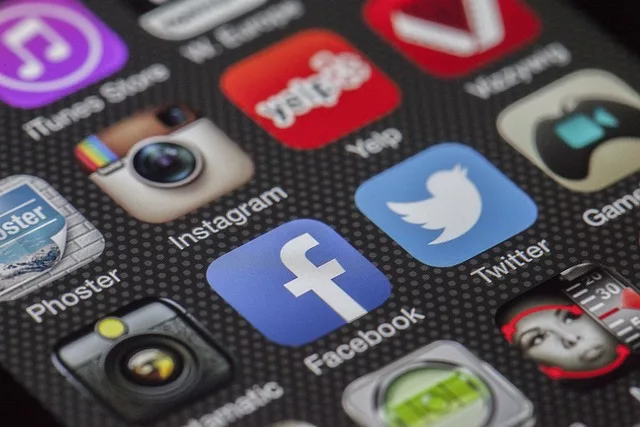
When it comes to social media platforms, the only absolute is that there are no absolutes. You’re going to encounter people claiming one social media platform is “the best” for music. That’s entirely false. There’s no one platform that’s “better” than the others, so let’s take a look at what each one is best at.
- Facebook is built from the ground up for marketing. Their groups are excellent for networking within your local music community and seeking out potential fans. Creating Facebook events for your gigs is outrageously simple and effective, too
- Instagram connects their users with your engaging content more quickly and directly. Photos and videos can stir up a lot of attention if they’re engaging enough.
- TikTok reaches younger crowds more easily, so if that’s a demographic you’re going for, TikTok is important. This platform really rewards highly engaging content.
- YouTube, while not really a social media platform in the traditional sense, is the perfect depository for all of your video content
- SoundCloud and BandCamp are specifically designed for music promotion and allow for easy monetization
- X (Twitter) can be more difficult to promote music with, but if you build a strong network of followers it can be beneficial to use.
Don’t overextend yourself while managing social media for bands
Those are just six of the popular social media platforms out there today. And yes, in a perfect world, it would be great for your band to have a presence on every single one of those platforms. But at the end of the day, you’re a human. You have a life outside of social media. You have music to write, perform, and record. And there are only so many hours in any given day.
Consistency extends to your ability to keep your social media profiles regularly updated. A dead or abandoned profile doesn’t do anything for your band, and worse, it can even leave some people thinking your band isn’t doing anything at all. So as you explore the world of using social media for bands, remember that it’s better to promote music consistently on a few platforms than inconsistently on all of them.
Create a Facebook page and keep it updated regularly. Can you handle more? Get your Instagram or TikTok going. YouTube, SoundCloud, and BandCamp are more for parking “evergreen” content that doesn’t need to be viewed rapidly to be successful. Those other platforms need constant attention, so focus on those, and only add more when you can manage it. And make sure you’re regularly, consistently updating all of your social media channels, too.
This only covered the basics of social media for bands. Yikes
As you can see, this has become yet another of Parlor City Sound’s signature super-lengthy guides for musicians. And that’s because social media marketing is a huge, sprawling topic. Even in this 2,909 word behemoth of an article, we’ve only barely scratched the surface.
There are countless related topics we plan on covering in the future. Paid content and advertising, using analytics, finding groups on social platforms, video content do’s and don’ts … it’s a lengthy list. And that’s on top of all the other music marketing guides we’re going to be writing, too. So this is a topic you’ll want to try and stay updated on.
Social media is an ever-evolving landscape of new features, rules, platforms, and techniques. It can be difficult to keep up with it all at times. But we strongly recommend finding the time every few months to research the changes to platforms and understand how they’ll affect you and your music. And we hope you’ll join us in the future as we explore more of these topics in more of our always-free guides, too!
